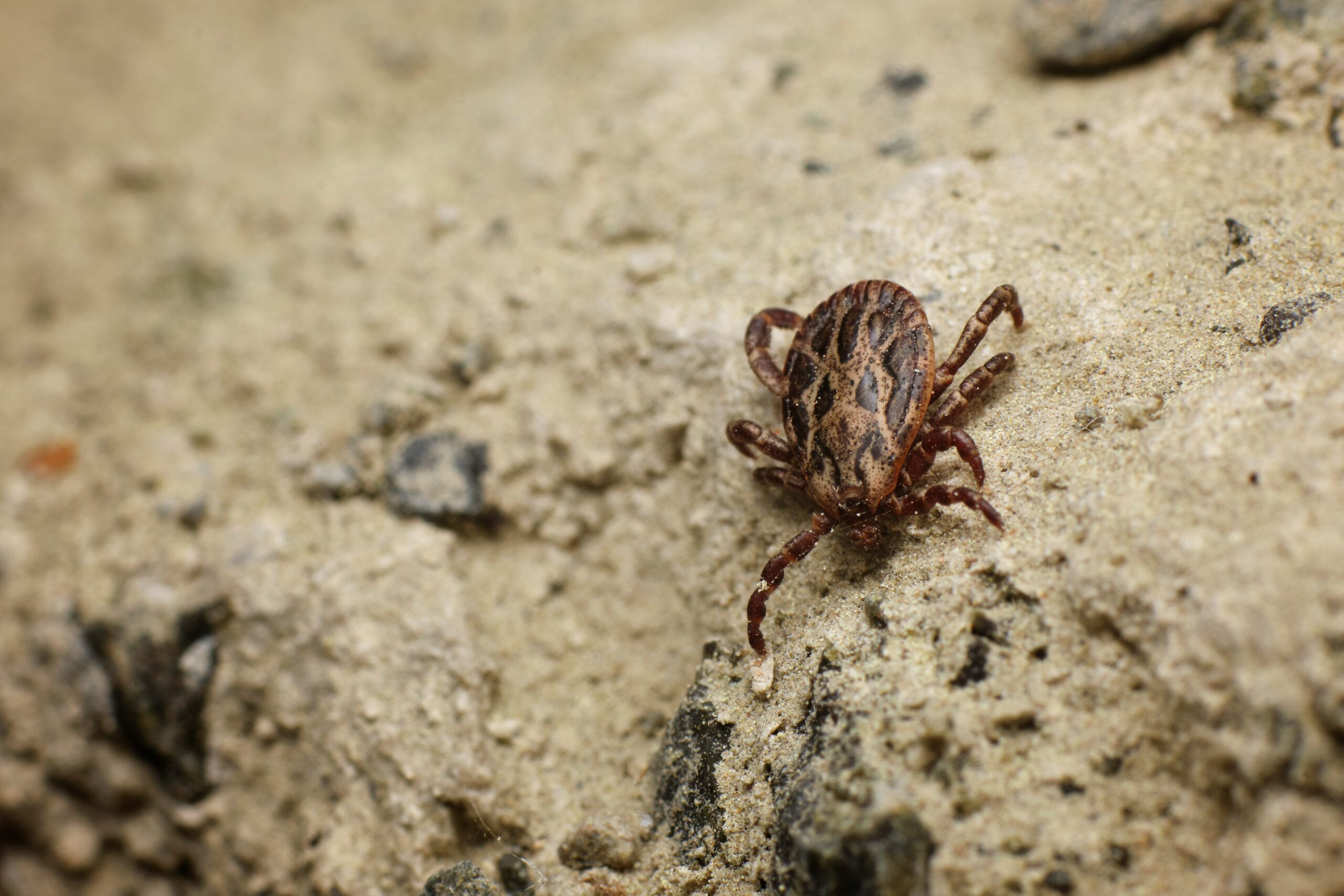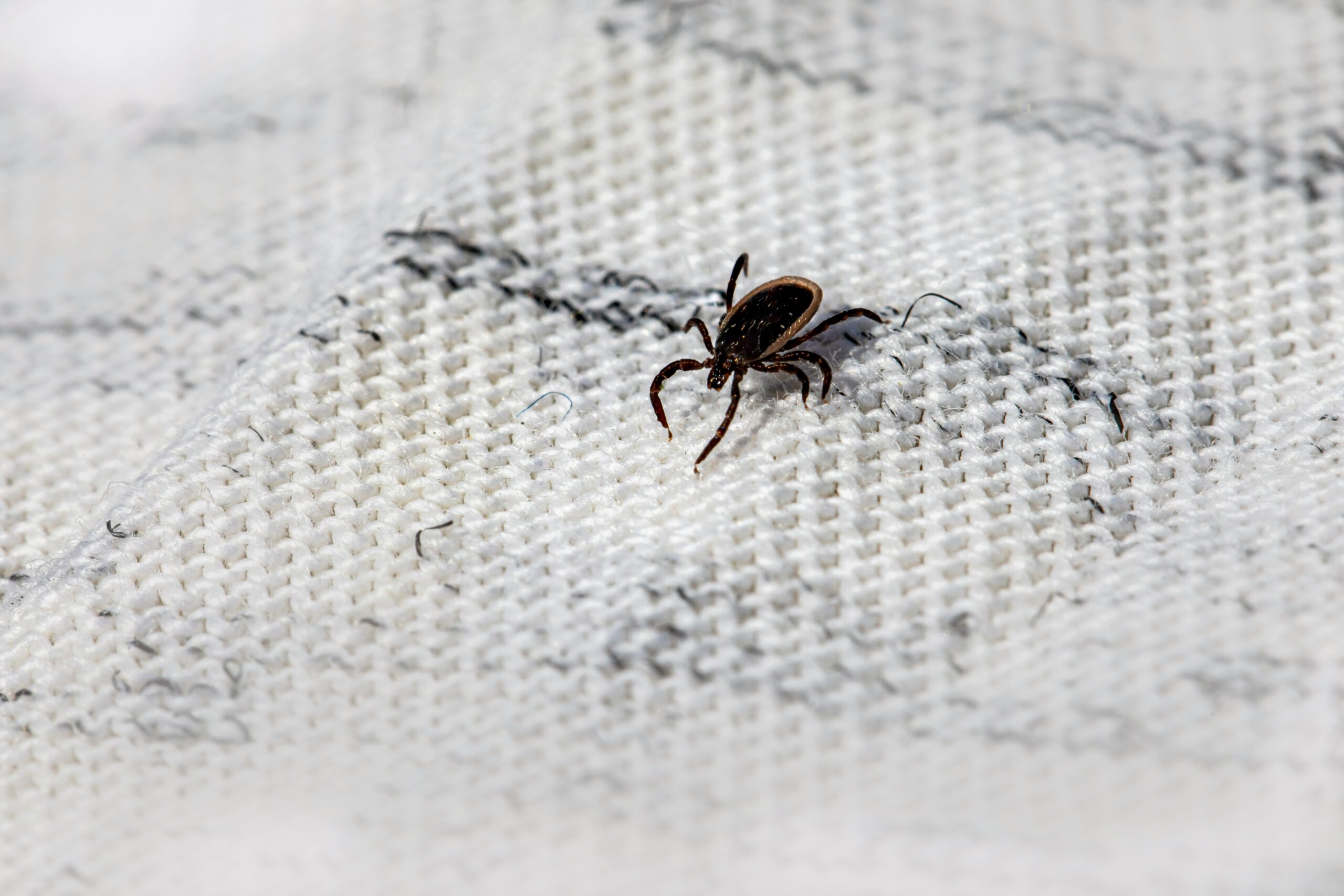TICKS
Your Tick problem, Gone For Good, Guaranteed.
Talk to an Expert
We’ll be in touch to personalize your pest protection plan:

DESCRIPTION:
___
Deer ticks are hard ticks, 1/16 to 1/8 inches long, and orange-brown except for the head, shield behind the head, and legs which are dark reddish-brown. Their mouthparts are easily seen when viewed from above. Their bodies are flattened and shaped like a tear drop.
BIOLOGY:
___
During the winter, adults feed on deer. In the spring, engorged females drop off of the host animal and lay 3,000 eggs in a protected area. The eggs hatch in 48-135 days, and from June through September, the larvae seek and feed on small rodents. After molting to the nymph stage, the ticks once again seek hosts and feed only once for three to nine days on larger animals such as raccoons, opossums, and squirrels. Nymphs are found from April through August of the following season. After 25-56 days, engorged nymphs molt to the adult stage which usually feed on deer. Adults live long enough to mate and for the female to lay eggs and then die.

HABITS:
___
This tick is a three-host tick, i.e., they require different and successively larger host animals in order to complete development. The larvae and adults commonly infest white-footed deer mice and deer. However, the nymphs have a much wider range of hosts, including humans. It is this stage which is responsible for the transmission of Lyme disease, the most significant tick-borne disease in the U.S. Annually more than 10,000 people are infected with this disease.
